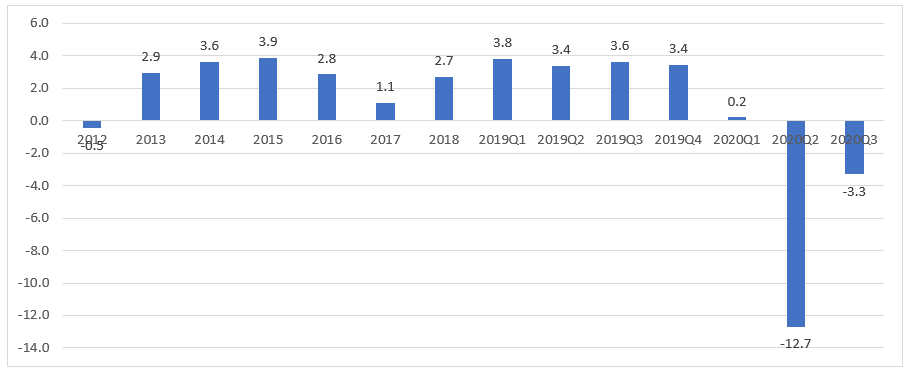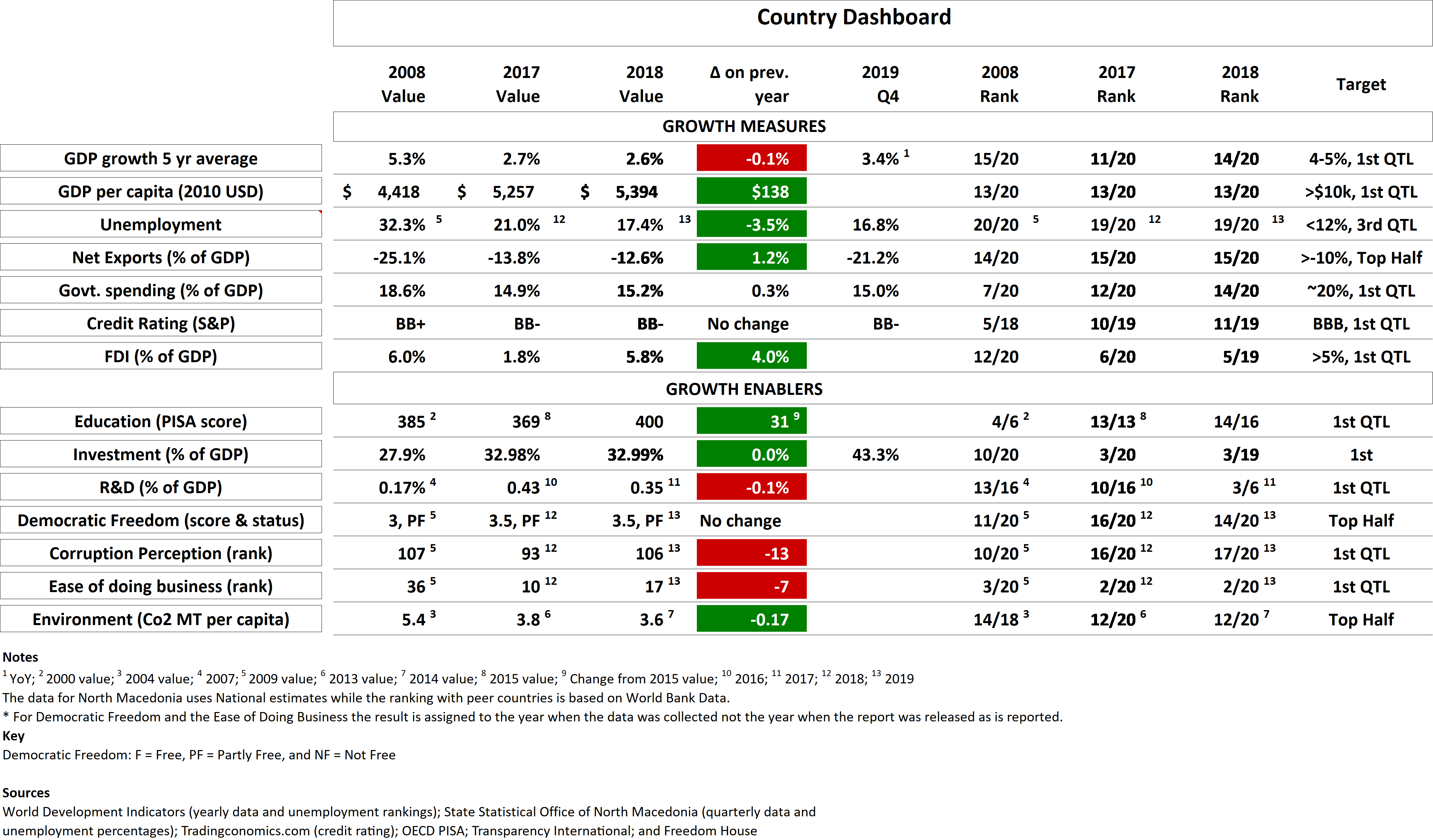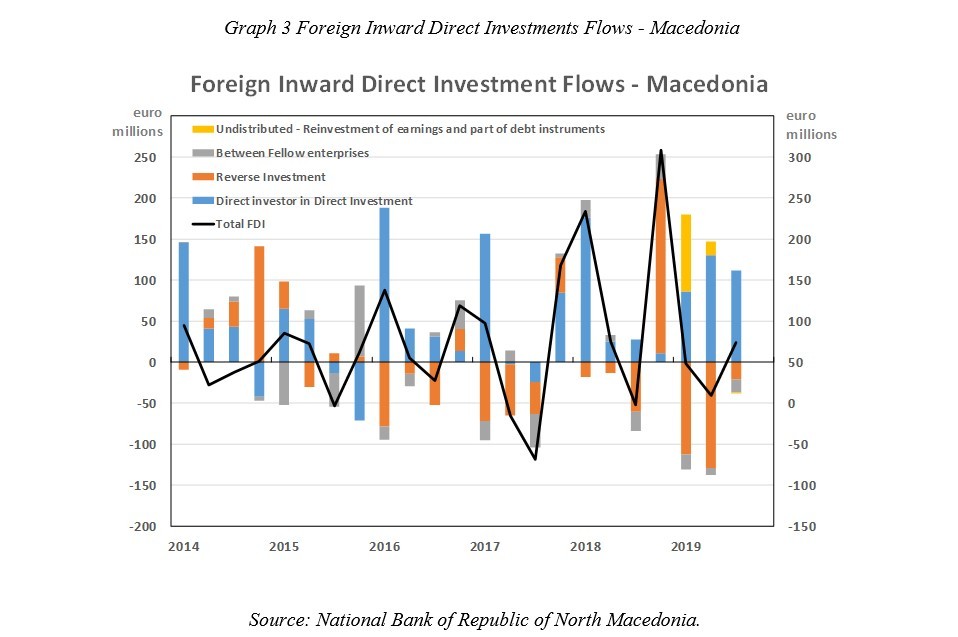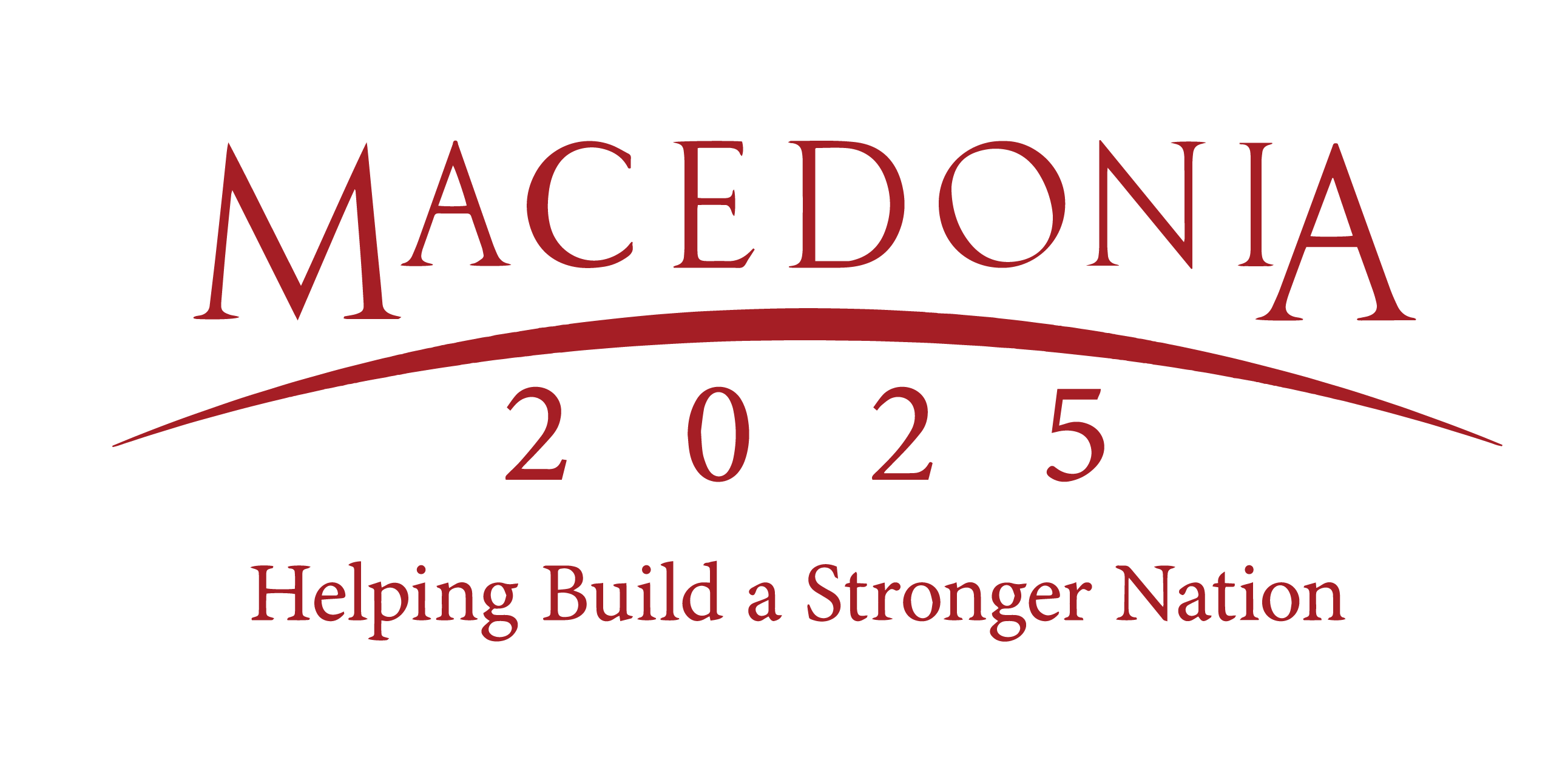Macedonia Country Dashboard – 2019 Q2 Update
Analysis and publications
- Gross domestic product:
The economy continued its recent trend of consistent growth with real GDP growth of 3.1 per cent YoY for Q2 2019 (graph 1).
Graph 1: Real GDP growth, quarterly data
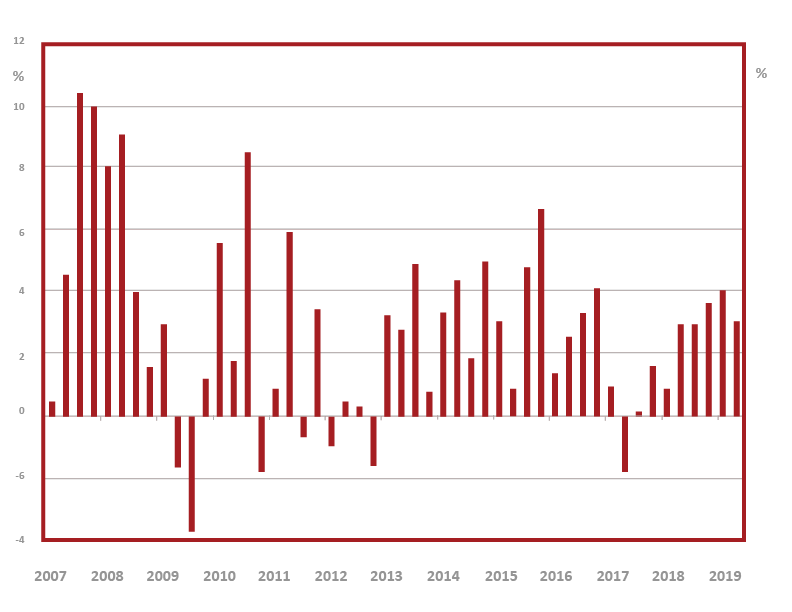
In production terms, Wholesale and Retail Trade made the largest contribution to growth (1.49 percentage points), growing 7.5 percent YoY (graph 2). IT and Communication and Finance and Insurance had a negative contribution to growth for the second quarter in a row (-0.3 percentage points).
In expenditure terms, all categories increased except general government final expenditure, which remained same.
Graph 2: Contribution to GDP growth in Q1 2019, by production sector
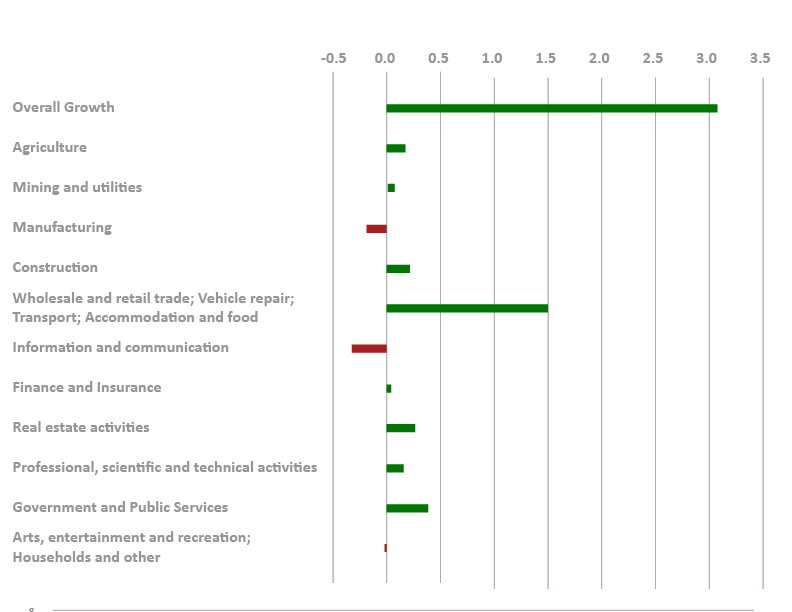
- Labour market
The labour market of Macedonia improved in Q2 2019 continuing the current trend. The activity rate of population aged 15-64 increased slightly to 66.1 percent (from 65.3 percent a year ago). The employment rate reached 54.4 percent (from 51.3 percent, a year ago). Unemployment continued to trend down with unemployment now at 17.6 percent, down from 21.4 percent in Q2 2018. Around 35 thousand jobs were created in the quarter on net basis.
- Consumer prices
The consumer prices index increased by 0.3% in Q2 2019.
- FDI
Total inward FDI flows decreased to €6.12m in Q2 2019, with reverse investment weighing against the overall result (see Graph 3). Direct investment by direct investors (i.e. new initial investment by investors) increased to €129m, by 50.3 percent from Q1.
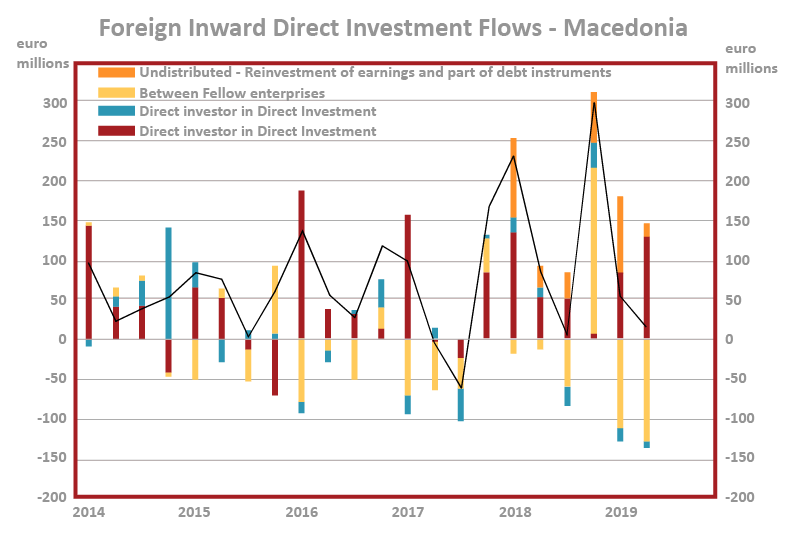
A reverse investment outflow is when an FDI company invests in or lends money to its parent company. A reverse investment inflow is when a parent company lends money or buys more equity in its FDI company. Without access to individual company figures, it is difficult to determine what drove the recent big swing in reverse investments. It is important to note however that reverse investments are volatile and regularly swing between inflows and outflows.
Country Dashboard
Table 1: North Macedonia Country Dashboard
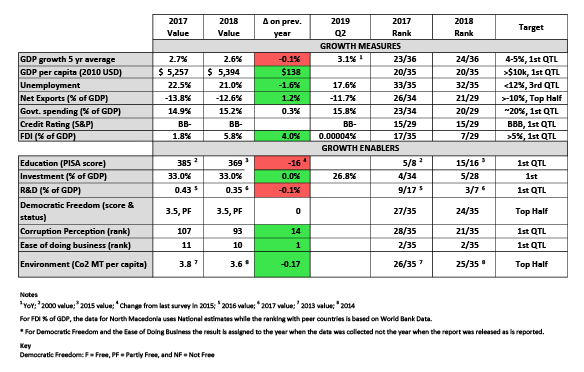
Related




